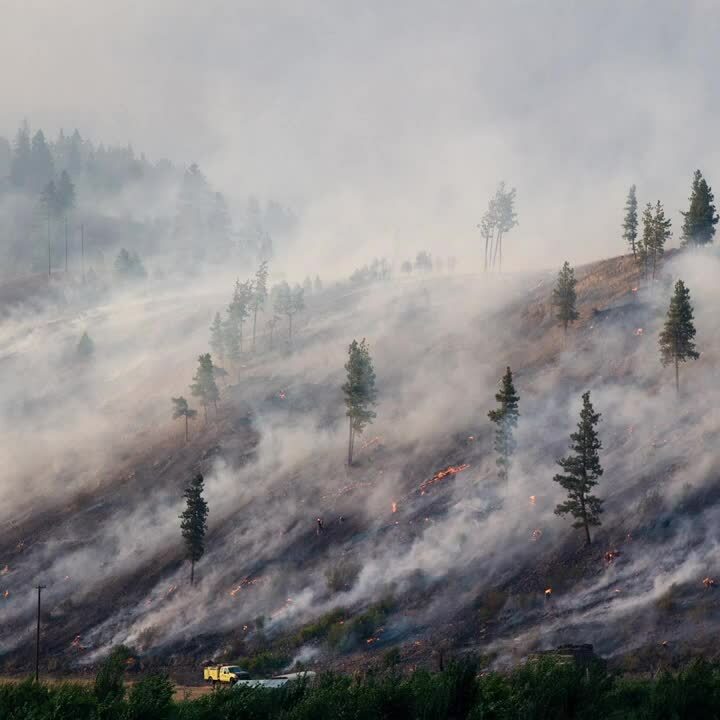Climate Risk
Widespread power outages rolled across the western United States in early September as another unprecedented heatwave scorched California, hurricane-strength winds scoured the Mountain West and catastrophic wildfires raged up and down the West Coast.

Extreme Weather Events: How S&P Global Ratings Evaluates the Credit Impacts in U.S. Public Finance
All else being equal, the better the credit quality at the time of the disaster the more likely a credit is to avoid major deterioration thereafter. Areas with what Ratings believes have high levels of physical damage and operational disruption and have weaker finances are more likely to be negatively affected, in Ratings' view, and may be placed on CreditWatch with negative implications or assigned a negative outlook prior to contact with management, if appropriate.
Ratings views the availability of federal grants and disaster assistance as a key component in stabilizing communities after extreme weather events, especially for areas with little to no support from private insurance. There are typically delays in receipt of aid, which underscores the importance of liquidity.

Utility Credit Pressures
August's rolling blackouts across portions of California were attributable to electricity scarcity during a heat wave. Utility customers faced the specter of similar outages over the Labor Day weekend because of record temperatures. S&P Global Ratings believes that these blackouts are unlikely to meaningfully disrupt the revenue streams of the state's public power utilities.
However, in Ratings' opinion, the blackouts portend operational, financial, and ratemaking challenges for not-for-profit electric utilities in California and elsewhere that face mandates to decarbonize.
California Public Power Utilities Face Disparate Physical and Credit Exposures to Wildfires
California wildfires are increasing in frequency and size due to a variety of factors including climate change, which has resulted in negative credit actions within Ratings' public power portfolio, but overall credit quality remains strong. California's "inverse condemnation" doctrine puts electric utilities in the state at considerable risk of substantial wildfire liability claims, whether or not utilities are negligent.
Read the Full Article
Grid Reliability
As the warming climate continues to wreak havoc on conventional power systems that rely heavily on long-distance transmission lines and large-scale power plants in remote places, the reliability of the 21st century electric grid may rely upon a distributed network of smaller, localized assets — just as the internet depends on a web of decentralized resources to keep running when a big data center goes down.

California Power Shortfall Forces Sweeping Review of Grid Reliability Strategy
In an August 19 letter to Gov. Gavin Newsom, the heads of the California Public Utilities Commission, California Energy Commission and CAISO, the state's primary wholesale grid operator, committed to using a forthcoming root-cause analysis of conditions that forced Aug. 14 and Aug. 15 rolling blackouts to inform their reassessment of the state's approach to electric reliability. The state's top energy officials already made one major conclusion. "Renewable energy did not cause the rotating outages," they said, countering a scathing Aug. 19 editorial by The Wall Street Journal on "California's green blackouts."
Read the Full ArticleNY Focused on Power Grid Reliability in Wake of California Blackouts
With New York drastically remaking its power grid to run on 70% renewable electricity resources by 2030 and carbon-free power by 2040, experts weighed in on how reliability can be ensured while transitioning to a cleaner power system. New York’s power system has some key differences to California’s and the grid operator, along with other stakeholders, are working to ensure power grid reliability as more intermittent generation is added in the next 20 years.
Read the Full ArticlePressures for Solar Power
California's catastrophic wildfires in 2020 have sent an unprecedented 4 million acres up in smoke — more than in the previous four years combined — and produced five of the state's six largest blazes on record. Wildfire smoke layered the atmosphere with a haze so thick that it effectively erased more than two years of solar power additions on the California ISO grid, the state's primary transmission system, according to an S&P Global Market Intelligence analysis of grid operator and proprietary data.

California Power Shortages Stem from Lack of Firm Generation Capacity: Experts
California faced the prospect of rolling power blackouts for the first time in almost 20 years, and stakeholders are pinning the blame on regulators' failure to heed warnings that shortages could occur unless steps were taken to ensure adequate resources were on call to cover peak demand periods. Those warnings came from the California ISO, power producers and the California Public Utilities Commission's own former president.
"We told the CPUC 4,700 MW was needed through 2022 and that the gap started in 2020," ISO CEO Steve Berberich said during an Aug. 17 briefing. "Despite all that, only 3,300 MW was authorized for procurement, but that's not starting [until] 2021."

Insurance
The fires that burned across parts of the Western U.S. through September are expected to lead to billions of dollars of total direct economic costs and a multibillion-dollar payout for insurers, according to Aon PLC's latest Global Catastrophe Recap. The U.S. has now reported a record 22 fires with at least 100,000 acres burned so far this 2020, Aon said in its report. At least 43 people died and thousands of homes and other structures have been destroyed by the fires, which were particularly impactful in California, Colorado, Oregon and Washington state.
State Farm, Farmers Among Biggest Homeowners Writers in Fire-Stricken Oregon
Early estimates of insured losses resulting from the wildfires have yet to be released, but the 2019 annual statutory data shows that State Farm Mutual Automobile Insurance Co. has the largest exposure in the homeowners line of business in Oregon. State Farm subsidiary State Farm Fire & Casualty Co. wrote $198.3 million in direct premium, controlling 22% of the homeowners insurance market in the state.
Read the Full Article
Further Reading






